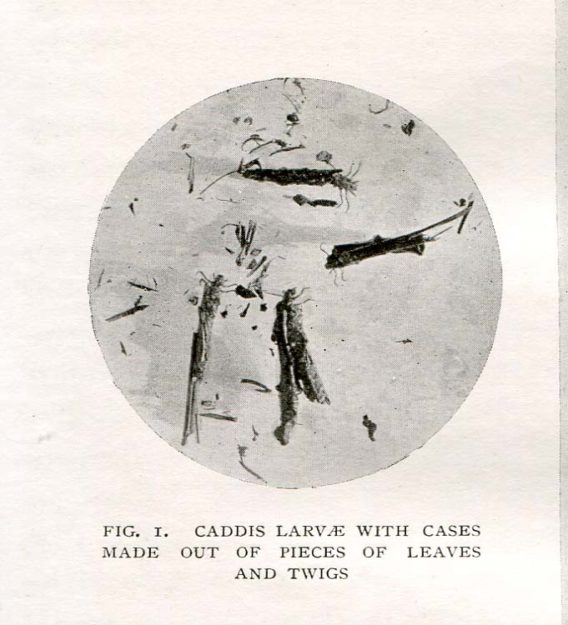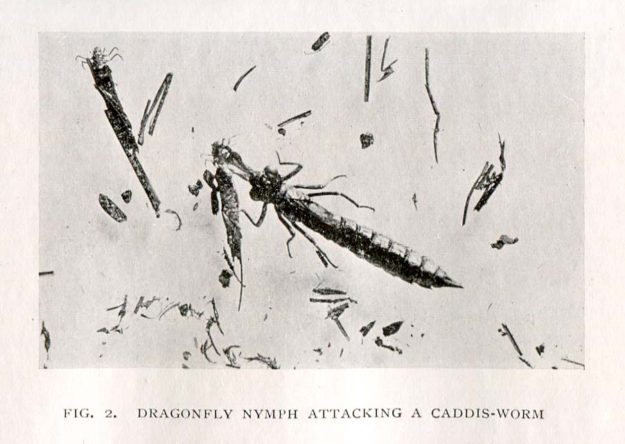F. Martin Duncan, Our insect friends and foes, Londres, Methuen & Co., 1911, pp. 93-96.
Probably the quainted n appearance of all aquatic larva are the Caddis-worms, who are the veritable « old-clo men » of the ponds and treams. They are long, more or less cylindrical insects, with only the head, thorax, and legs horny, the rest of the body being quite soft, and it is the necesity of hiding their sleek and tempting bodies from the numerous hungry foes that as made the Caddis-worms adopt the « old-clo » habit and manufacture out of the most varied materials the curious cases with which they clothes themselves. Tiny pieces of wood, small twigs, bits of leaves, small stones and grains of sand, and minutes shells often still containing their living owners, are all pressed into service of the Caddis larva for the purpose of making its body-case ; while a little careful observation will reveal the interesting fact that each species of Caddis affects some particular class of material for the construction of its case. …./….

…/…The cases, formed from such varied materials, give the Caddis larvae a very curious appearance, and make their movements far from graceful, their somewhat shambling gait still further reminding one of a decrepit « old-clo » man. The saes are made with the aid of silking threads, with which the caddis larva weaves together the material,bits of sticks, leaves, shells, etc., which it collects for the purpose ; the supply of silk being produced by special silk-secreting glands which have their opening in the labium of the insect…./….

…/..The construction of a case by a Caddis larva is very interesting sight, and one that may be easily witnesed. The larva must be carefully removed from its case without injury. This will be best accomplished by gently slitting or breaking open the case with the help of a pair of micro-forceps. It is quite useless to attempt to pull the larva head-first out of the case, for the insect will generally rather be pulled pieces thant relinquish its hold uon the silkem lining of its tube. When the larva has been successfully removed from its case, is should be placed in a shallow dish or glass tank of water, together with a supply of pieces of stick, Dead leaves, sand grains, or other material similar to that employed in the construction of the case from which it has been extracted. The larva will at once begin to select from the materials provided such portions as many meet its requirements, and proceed to form them into a new sheath around its body, the whole operation of building the new case take from one to therre or four hours.